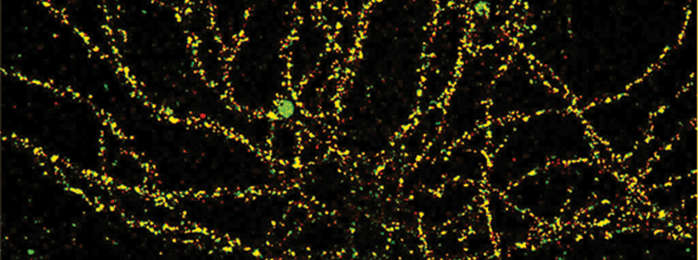
An Early Test for Alzheimer's
Until now, there has been no early detection method for Alzheimer’s disease. Brain scans and medical exams can point to the condition, but a definitive diagnosis is made only after an examination of the brain tissue following death.
That may soon change, thanks to the efforts of an interdisciplinary team of Northwestern scientists. The team, led by Weinberg College neuroscientist William L. Klein and materials scientist Vinayak Dravid, has developed a noninvasive brain-imaging approach that can detect the disease in a living animal. And it can do so at the earliest stages of the disease, well before typical Alzheimer’s symptoms appear.
The team has created an MRI probe that pairs a magnetic nanostructure with an antibody that seeks out the brain toxins responsible for the onset of the disease. The accumulated toxins show up as dark areas in MRI scans of the brain, due to the magnetic quality of the nanostructures.
This new approach may one day enable scientists to spot Alzheimer’s earlier and develop better therapies and drugs to fight the disease before it reaches an advanced state. The MRI probe has the potential to improve memory, too, by binding to the toxins and “handcuffing” them, preventing further damage to the brain.
Back to top